
18 Results


Biology is designed for multi-semester biology courses for science majors. It is grounded on an evolutionary basis and includes exciting features that highlight careers in the biological sciences and everyday applications of the concepts at hand. To meet the needs of today’s instructors and students, some content has been strategically condensed while maintaining the overall scope and coverage of traditional texts for this course. Instructors can customize the book, adapting it to the approach that works best in their classroom. Biology also includes an innovative art program that incorporates critical thinking and clicker questions to help students understand—and apply—key concepts.
- Subject:
- Biology
- Life Science
- Material Type:
- Full Course
- Provider:
- Rice University
- Provider Set:
- OpenStax College
- Date Added:
- 08/22/2012

- Subject:
- Biology
- Life Science
- Material Type:
- Unit of Study
- Provider:
- Rice University
- Provider Set:
- OpenStax College

- Subject:
- Applied Science
- Material Type:
- Module
- Date Added:
- 07/10/2017
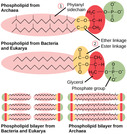
By the end of this section, you will be able to:Describe the basic structure of a typical prokaryoteDescribe important differences in structure between Archaea and Bacteria
- Subject:
- Applied Science
- Biology
- Life Science
- Material Type:
- Module
- Date Added:
- 07/10/2017

- Subject:
- Biology
- Life Science
- Material Type:
- Unit of Study
- Provider:
- Rice University
- Provider Set:
- OpenStax College

By the end of this section, you will be able to:Describe the structure of eukaryotic cellsCompare animal cells with plant cellsState the role of the plasma membraneSummarize the functions of the major cell organelles
- Subject:
- Applied Science
- Biology
- Life Science
- Material Type:
- Module
- Date Added:
- 07/10/2017

- Subject:
- Applied Science
- Biology
- Life Science
- Material Type:
- Module
- Date Added:
- 07/10/2017
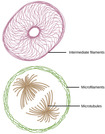
By the end of this section, you will be able to:Describe the cytoskeletonCompare the roles of microfilaments, intermediate filaments, and microtubulesCompare and contrast cilia and flagellaSummarize the differences among the components of prokaryotic cells, animal cells, and plant cells
- Subject:
- Applied Science
- Biology
- Life Science
- Material Type:
- Module
- Date Added:
- 07/10/2017

By the end of this section, you will be able to:Understand how electrochemical gradients affect ionsDistinguish between primary active transport and secondary active transport
- Subject:
- Applied Science
- Biology
- Life Science
- Material Type:
- Module
- Date Added:
- 07/10/2017
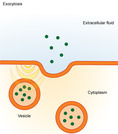
By the end of this section, you will be able to:Describe endocytosis, including phagocytosis, pinocytosis, and receptor-mediated endocytosisUnderstand the process of exocytosis
- Subject:
- Applied Science
- Biology
- Life Science
- Material Type:
- Module
- Date Added:
- 07/10/2017

By the end of this section, you will be able to:Understand the fluid mosaic model of cell membranesDescribe the functions of phospholipids, proteins, and carbohydrates in membranesDiscuss membrane fluidity
- Subject:
- Applied Science
- Biology
- Life Science
- Material Type:
- Module
- Date Added:
- 07/10/2017

- Subject:
- Applied Science
- Biology
- Life Science
- Material Type:
- Module
- Date Added:
- 07/10/2017
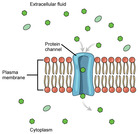
By the end of this section, you will be able to:Explain why and how passive transport occursUnderstand the processes of osmosis and diffusionDefine tonicity and describe its relevance to passive transport
- Subject:
- Applied Science
- Biology
- Life Science
- Material Type:
- Module
- Date Added:
- 07/10/2017

Worksheet that goes over the types of transport associated with a cell membrane.
- Subject:
- Applied Science
- Biology
- Life Science
- Material Type:
- Homework/Assignment
- Author:
- Lisa Zung
- Date Added:
- 07/02/2020
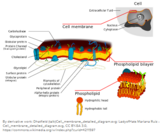
In this seminar you will create images of the biologically important structures of the cell membrane. The pictures will be translated to function. You will practice the terminology of these structures to associate their importance in the function of the cell membrane. The inquiry lab will allow you to design a model of the limitations of cell growth due to the cell membrane using water balloons.StandardsBIO.A.2.2.3 Compare and contrast the structure and function of carbohydrates, lipids, proteins, and nucleic acids in organisms.BIO.A.4.2.1 Explain how organisms maintain homeostasis (e.g., thermoregulation, water regulation, oxygen regulation).BIO.A.4.1.3 Describe how endoplasmic reticulum, Golgi apparatus, and other membrane-bound cellular organelles facilitate transport of materials within cells.BIO.A.4.1.2 Compare and contrast the mechanisms that transport materials across the plasma membrane (i.e., passive transport -- diffusion, osmosis, facilitated diffusion; active transport -- pumps, endocytosis, exocytosis).BIO.A.4.1.1 Describe how the structure of the plasma membrane allows it to function as a regulatory structure and/or protective barrier for a cell.
- Subject:
- Biology
- Life Science
- Material Type:
- Lesson Plan
- Author:
- Bonnie Waltz
- Deanna Mayers
- Tracy Rains
- Date Added:
- 10/07/2017

This is a powerpoint presentation of the contents found within chapter 5 of the openstax biology textbook.
- Subject:
- Life Science
- Material Type:
- Lecture Notes
- Date Added:
- 10/31/2016

This resource is a video abstract of a research paper created by Research Square on behalf of its authors. It provides a synopsis that's easy to understand, and can be used to introduce the topics it covers to students, researchers, and the general public. The video's transcript is also provided in full, with a portion provided below for preview:
"Phospholipid scramblase 1 (PLSCR1) is the most studied member of its protein family and has a complex array of suggested functions. While PLSCR1 was first described as a plasma membrane protein, it has subsequently been found in other cellular compartments and implicated in numerous cellular pathways including apoptosis, intracellular trafficking of membrane proteins, and pro-inflammatory events. PLSCR1 interacts with various effectors, mediators, and regulators that then contribute to distinct cellular processes. While most PLSCR1 interactors are thought to be cell-type specific, the mechanisms of PLSCR1's regulatory functions are often shared. But not all PLSCR1 interactors are endogenous in origin; PLSCR1 also interacts with exogenous viral proteins. These interactions regulate viral uptake and spread in both pro- and anti-viral ways..."
The rest of the transcript, along with a link to the research itself, is available on the resource itself.
- Subject:
- Biology
- Life Science
- Material Type:
- Diagram/Illustration
- Reading
- Provider:
- Research Square
- Provider Set:
- Video Bytes
- Date Added:
- 03/02/2023